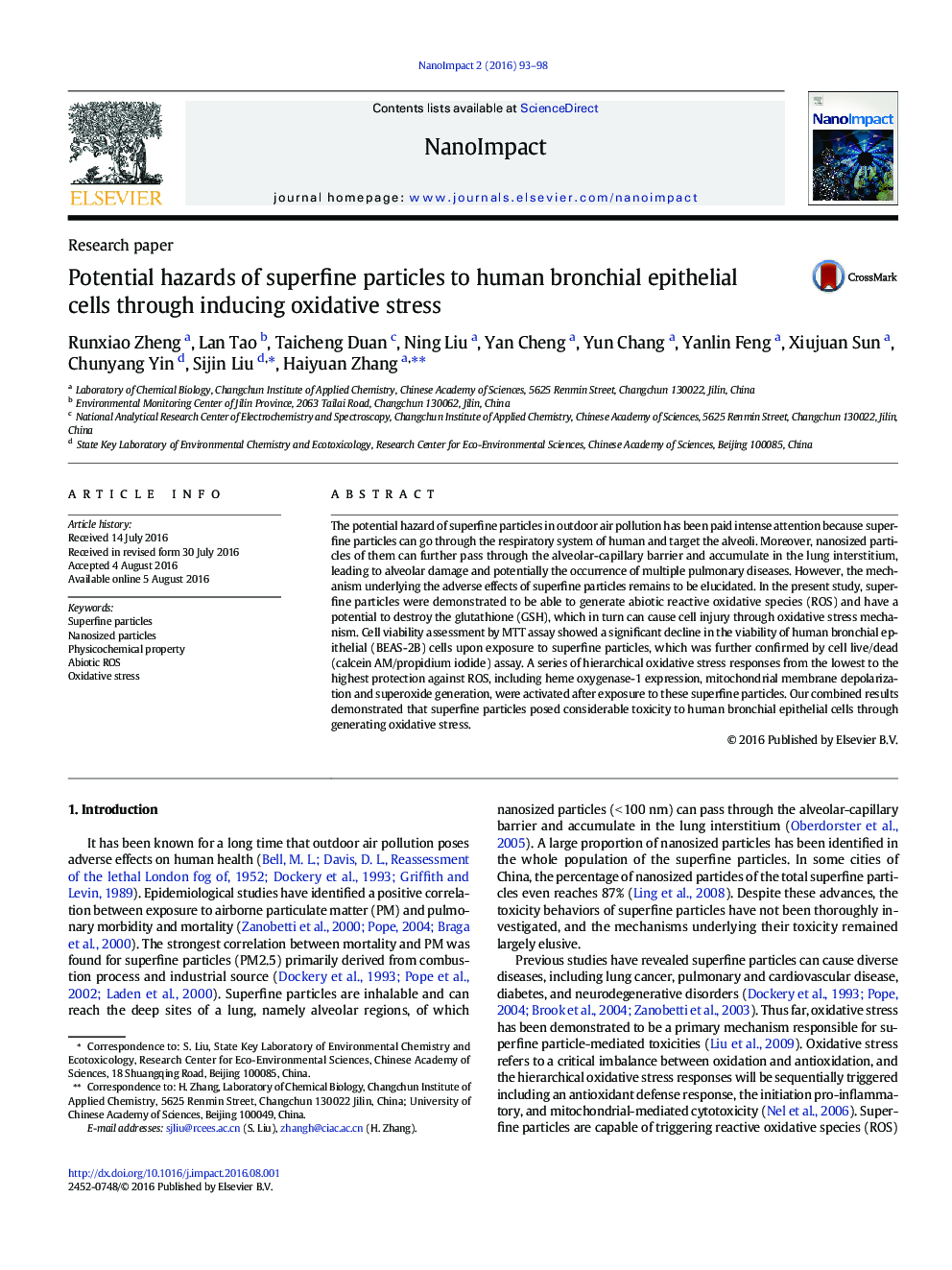| کد مقاله | کد نشریه | سال انتشار | مقاله انگلیسی | نسخه تمام متن |
|---|---|---|---|---|
| 5854649 | 1562024 | 2016 | 6 صفحه PDF | دانلود رایگان |
- Superfine particles have a large proportion of nanosized particles.
- Superfine particles have potentials to generate abiotic ROS and directly damage GSH molecules.
- The significant decline in cell viability could be caused by superfine particles.
- HO-1 expression and mitochondrial-mediated toxicological responses were activated through oxidative stress.
The potential hazard of superfine particles in outdoor air pollution has been paid intense attention because superfine particles can go through the respiratory system of human and target the alveoli. Moreover, nanosized particles of them can further pass through the alveolar-capillary barrier and accumulate in the lung interstitium, leading to alveolar damage and potentially the occurrence of multiple pulmonary diseases. However, the mechanism underlying the adverse effects of superfine particles remains to be elucidated. In the present study, superfine particles were demonstrated to be able to generate abiotic reactive oxidative species (ROS) and have a potential to destroy the glutathione (GSH), which in turn can cause cell injury through oxidative stress mechanism. Cell viability assessment by MTT assay showed a significant decline in the viability of human bronchial epithelial (BEAS-2B) cells upon exposure to superfine particles, which was further confirmed by cell live/dead (calcein AM/propidium iodide) assay. A series of hierarchical oxidative stress responses from the lowest to the highest protection against ROS, including heme oxygenase-1 expression, mitochondrial membrane depolarization and superoxide generation, were activated after exposure to these superfine particles. Our combined results demonstrated that superfine particles posed considerable toxicity to human bronchial epithelial cells through generating oxidative stress.
242
Journal: NanoImpact - Volume 2, April 2016, Pages 93-98
